Today, I’d like to introduce Meigetsuin, which is about a 10-minute walk from Kitakamakura Station on the JR Yokosuka Line towards Kamakura Station. Meigetsuin is famously known as the “Hydrangea Temple” due to its beautiful blue hydrangeas. During the peak season, it becomes quite lively with visitors.
I’ve been curious about it for a while, so I finally went! It was truly moving, and I hope you read this article to the end and consider visiting Meigetsuin yourself. Let’s dive in!
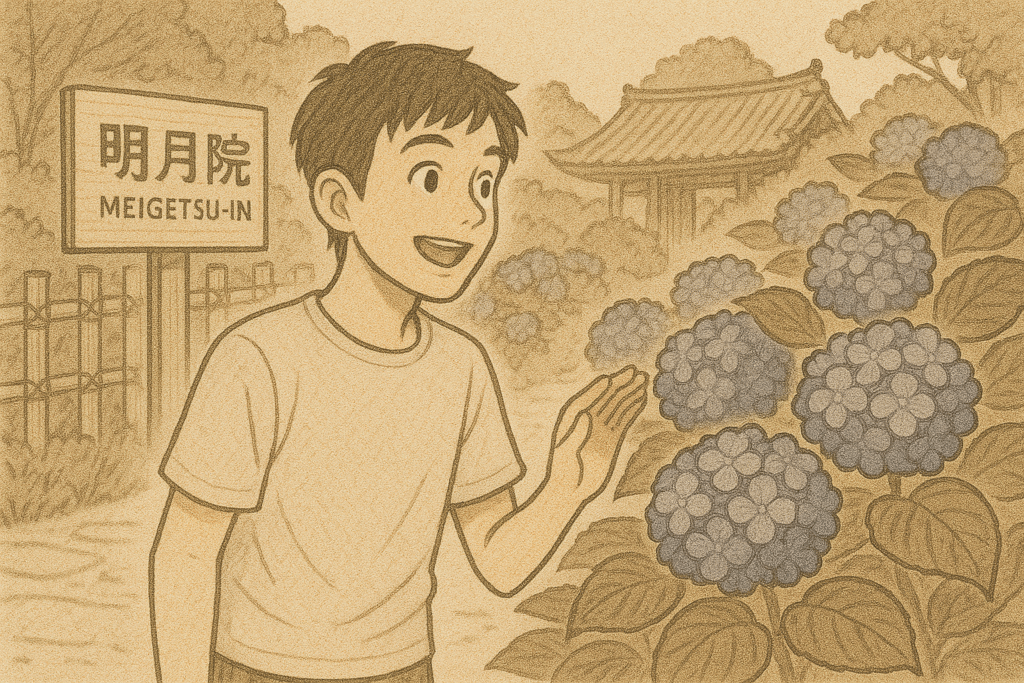
The Journey to Meigetsuin
When I arrived at Kitakamakura Station, I was surprised by the crowd. To get to Meigetsuin from the station, you can take a narrow road along the railway, but it was packed with people.

I usually enjoy the tranquil atmosphere of Kitakamakura. It’s peaceful and calming with lots of nature around the temples, which is very soothing. However, on that day, it was a bit disappointing because, during hydrangea season, many people gather. Generally, the best time to see hydrangeas is from mid-June to early July. Personally, I think by July it might be a bit late.
Meigetsuin, known as the “Hydrangea Temple,” is a particularly popular spot. At certain times, it attracts a huge number of tourists. I anticipated the crowd, but I was determined to see the famous hydrangeas for myself.
Additionally, the heat on that day was intense… This year, the rainy season started later than usual! Even in mid-June, temperatures often reached around 30°C. By the way, July and August often exceed 35°C, so summers in Japan can be very hot.
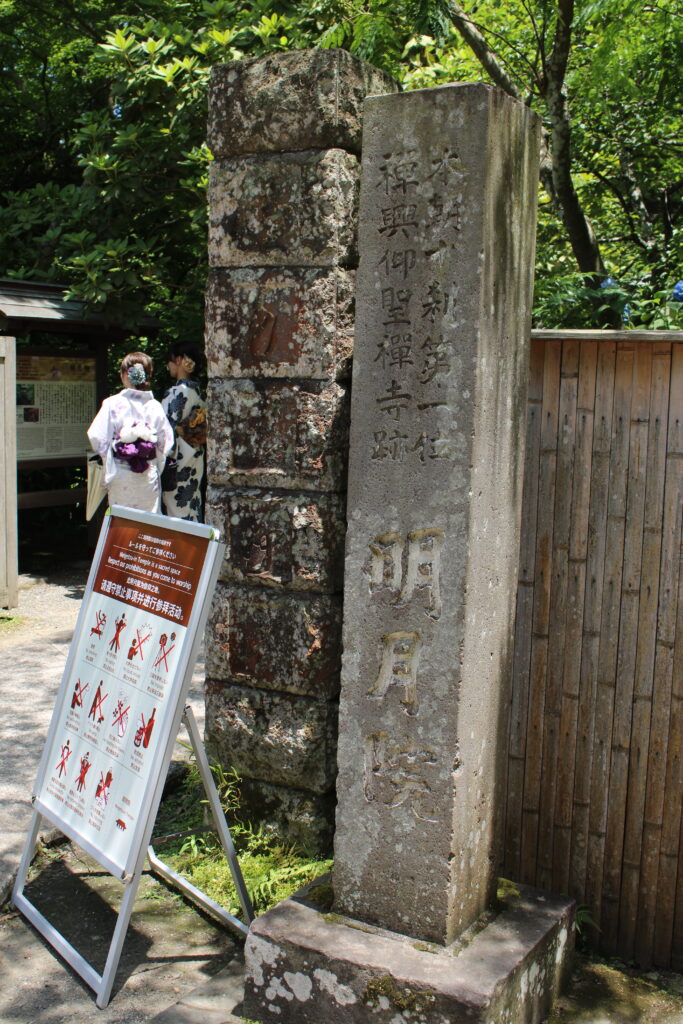
What is Meigetsuin?
Let’s start with a brief introduction to Meigetsuin.
The predecessor of Meigetsuin, known as Meigetsuan, was founded about 850 years ago in 1160. It was established by Yamanouchi Sudo Tsunetoshi for the purpose of providing solace to his father’s soul. His father was a samurai who died in the Heiji Rebellion.
Around 100 years later, the fifth shikken (regent) of the Kamakura Shogunate, Hojo Tokiyori, established Saimyoji Temple on this site. Although Saimyoji Temple was later abandoned, Tokiyori’s successor, the eighth shikken Tokimune, founded Zenkoji Temple on the remains of Saimyoji.
In 1380, Meigetsuan was renamed Meigetsuin. Ultimately, Zenkoji Temple was abandoned in the early Meiji period, but Meigetsuin, which was its main branch, survived.
As a result of this history, you can find Hojo Tokiyori’s grave on the left side as you enter Meigetsuin. I decided to visit the grave first before exploring the temple grounds.
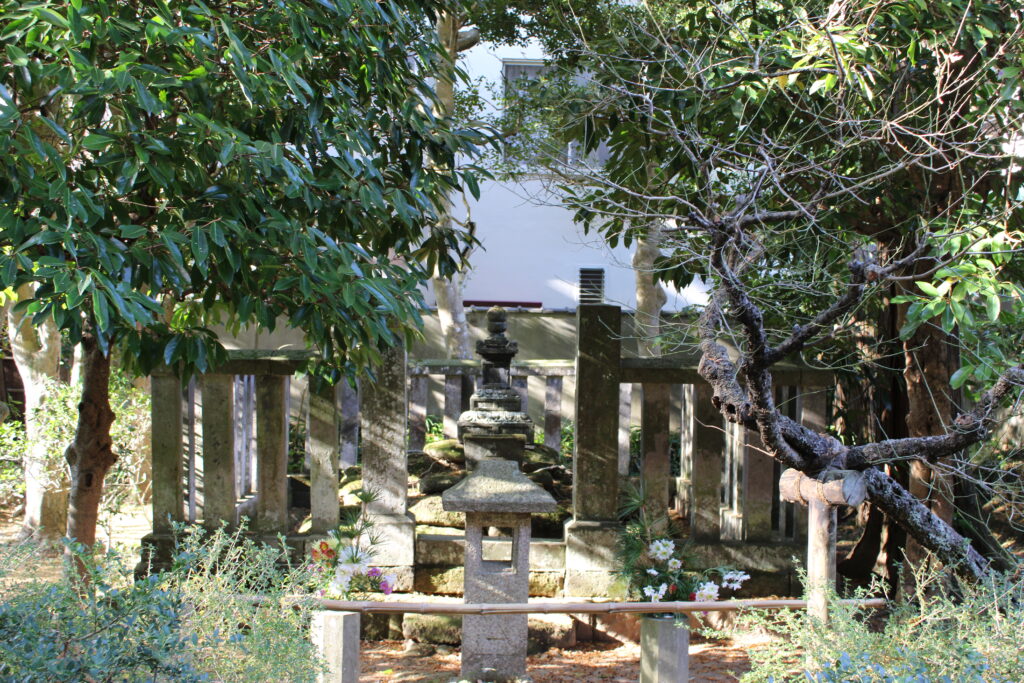
The Hydrangeas
The sight of blue hydrangeas blooming throughout the temple grounds is truly overwhelming!
Indeed, Meigetsuin lives up to its reputation as the “Hydrangea Temple.”


People come from far and wide to see this breathtaking display! Here’s what it looks like.



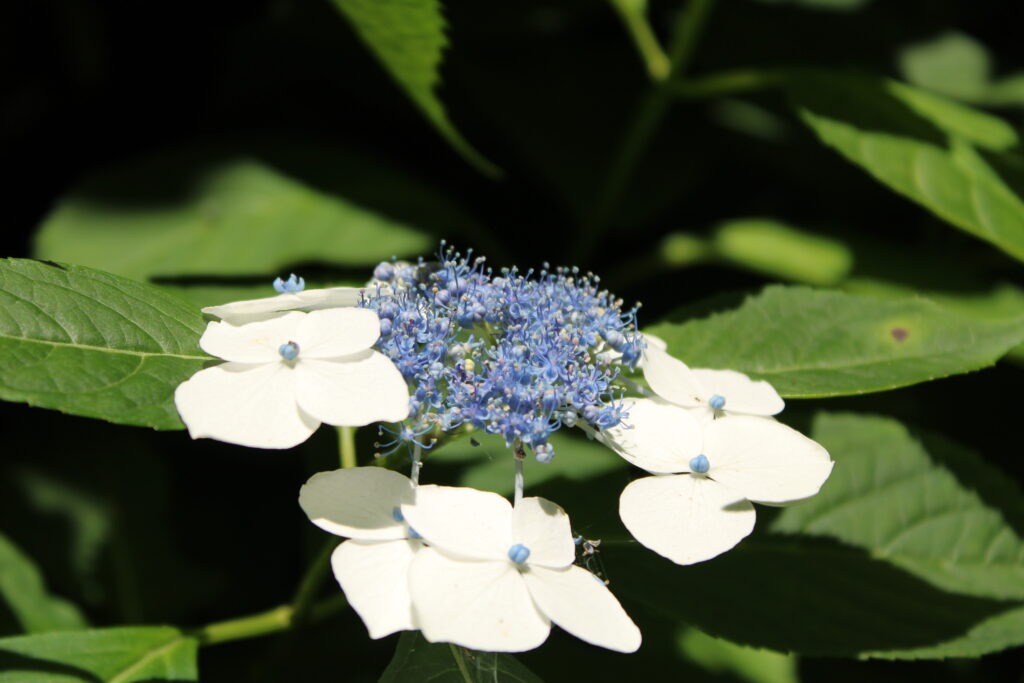
The Back Garden
When I planned to visit the back garden during the autumn foliage season (late November), I found out that it is only open to the public from December. Determined to visit this time, I made the trip. During early summer, the garden is open from early June when the irises are in full bloom. Here’s what the irises look like.

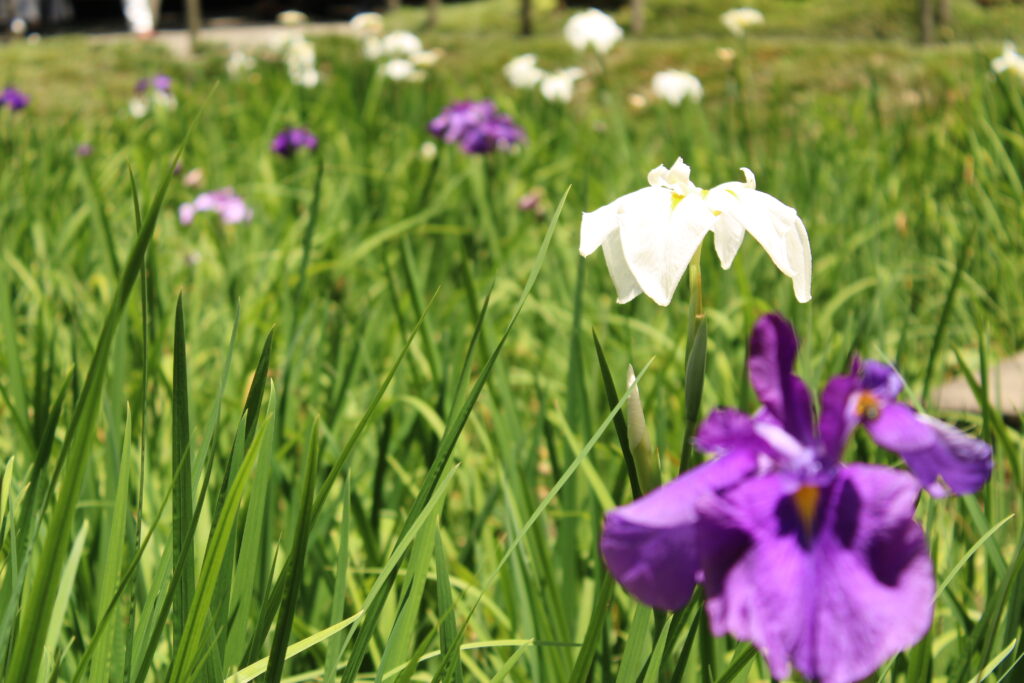
It might have been even more beautiful if I had come a bit earlier. My impression is that the garden is quite pleasant, with plenty of shade and a cool atmosphere. Since there is an additional fee of 500 yen to enter the back garden, it wasn’t crowded, and I could enjoy it leisurely. However, if your main interest is in the hydrangeas, you might find them enjoyable without needing to pay the extra fee to access the back garden.
Here’s a look at the back garden.
First, there are turtles! Although they are just decorative.

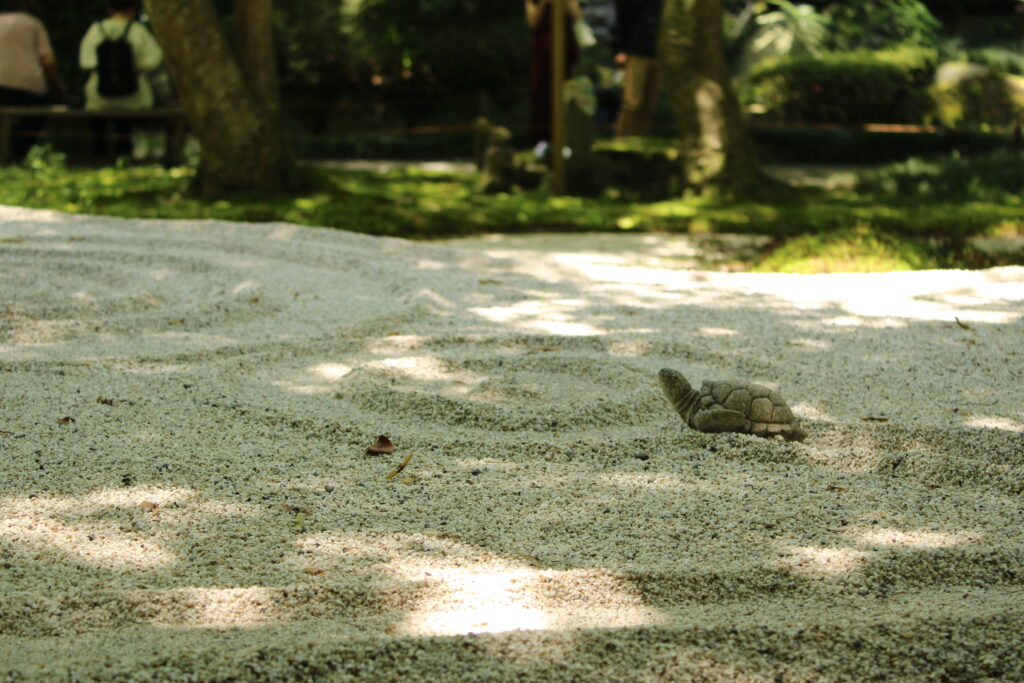
Also, there are blue and red Jizo statues.

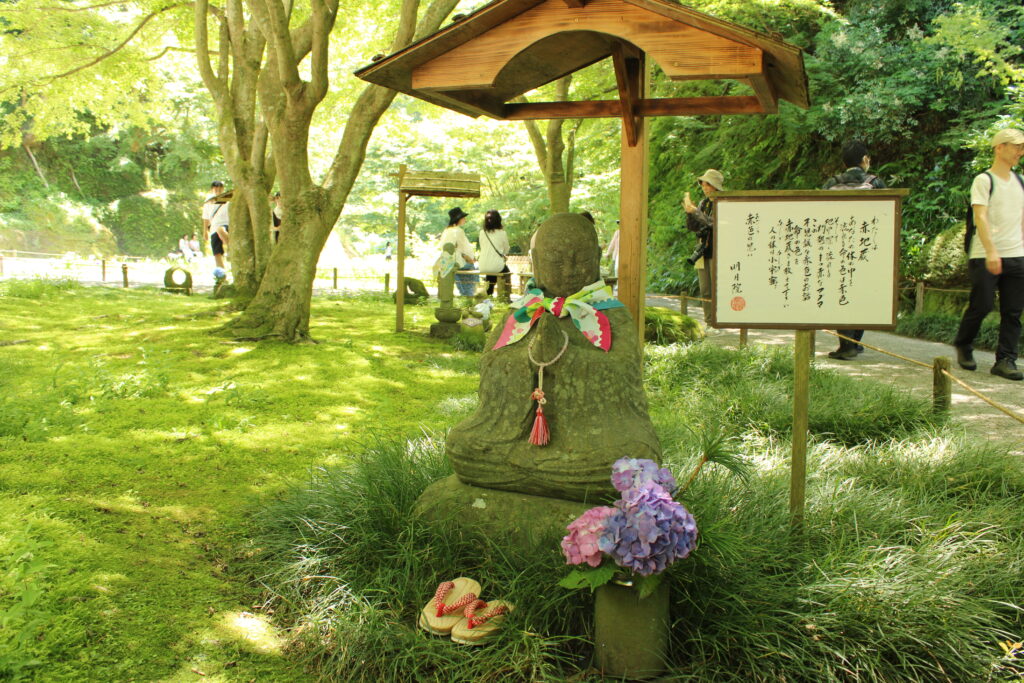
Additionally, the moon-shaped cut stones are stunning! Given the name “Meigetsuin,” which means “bright moon,” perhaps the moon motif is fitting. In Meigetsuin, “明” (mei) means “bright,” and “月” (getsu) means “moon.”
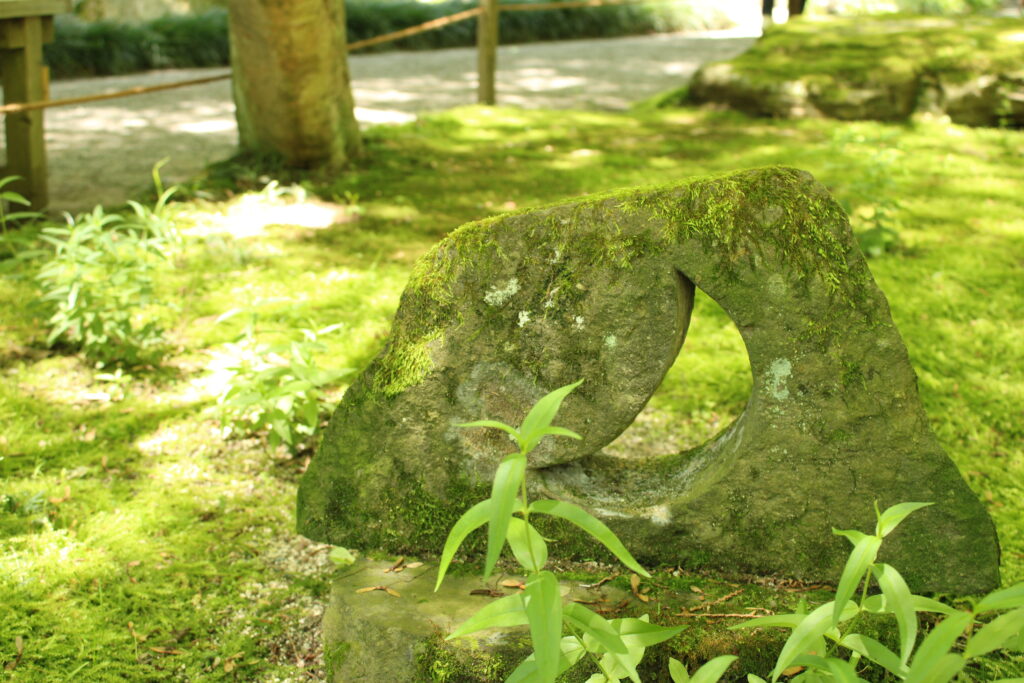
The natural surroundings are rich and calming, offering a serene experience.

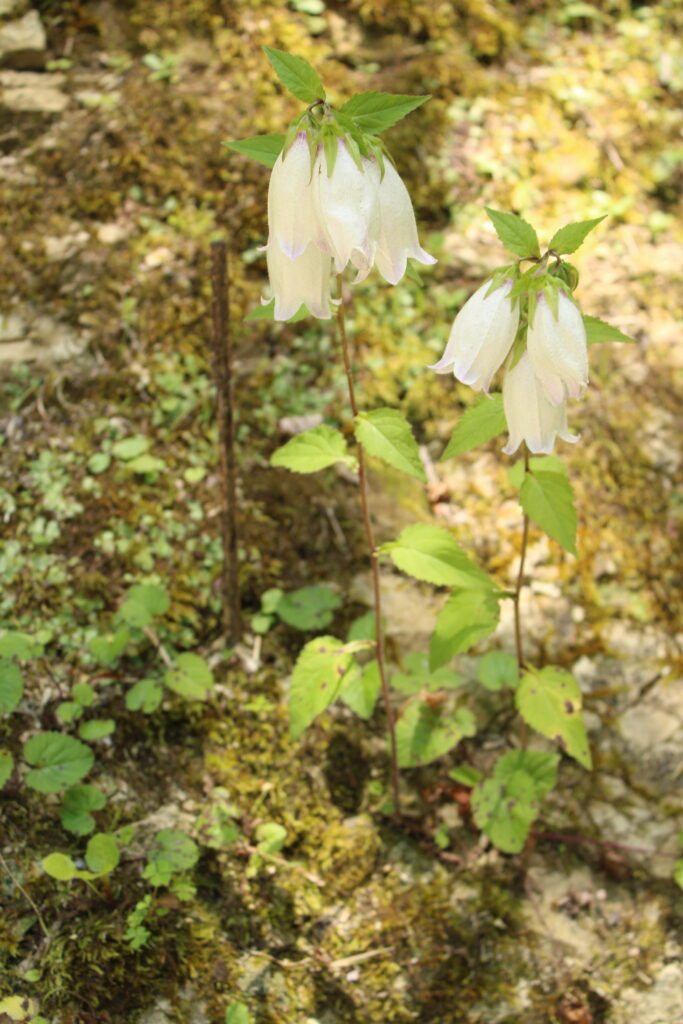
Other Attractions
As a blogger who focuses on historical walks, I want to share not only the beauty of the hydrangeas but also the historical aspects of Meigetsuin.
The Meigetsuin Yagura
The “yagura” refers to cave tombs unique to medieval Kamakura. The yagura at Meigetsuin is one of the largest surviving examples in Kamakura. As shown in the photo below, yagura with carved walls are quite rare!
This yagura is said to have been created by Yamanouchi Sudo Tsunetoshi, in memory of Yamanouchi Sudo Toshimichi who died in the Heiji Rebellion in Kyoto in 1160.
Although it has weathered over time, it’s remarkable that it has been preserved for over 800 years!
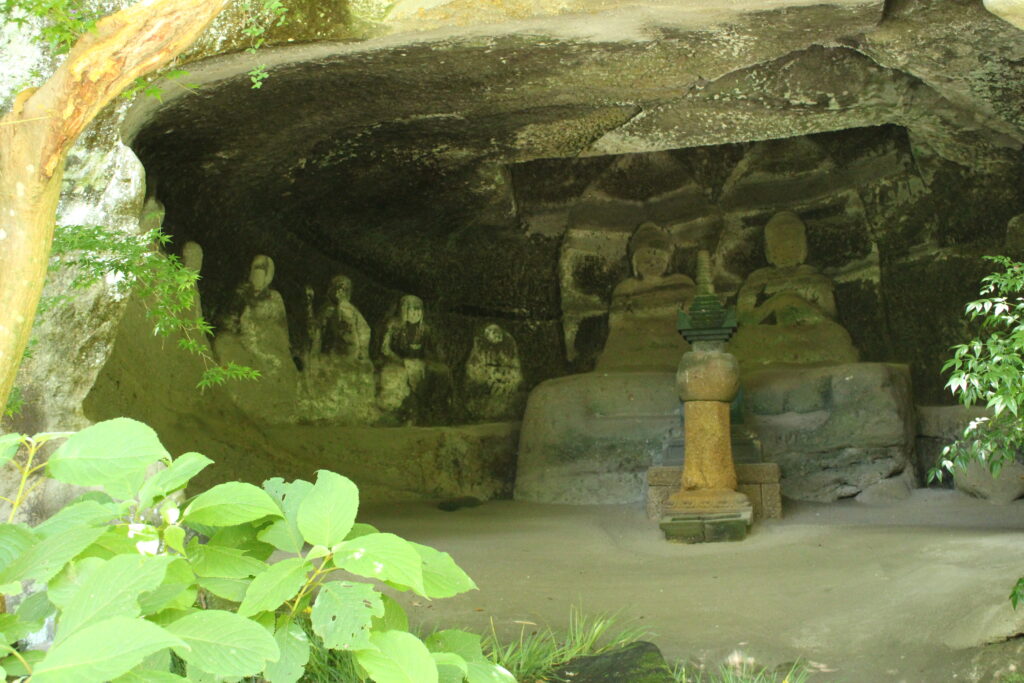
Kaizandō (Founder’s Hall)
Next, we come to the Kaizandō (Founder’s Hall), originally known as Sōyūdō. This hall was established on the grounds of Meigetsuin during the height of Zenkoji’s prominence around 1380. It was later renamed Kaizandō and serves as a place to enshrine the statue of the temple’s first abbot. Inside the hall, you’ll find a wooden statue of the second-generation founder, Zen Master Mishitsusyugen. The building itself is quite charming, with a wonderfully traditional roof!
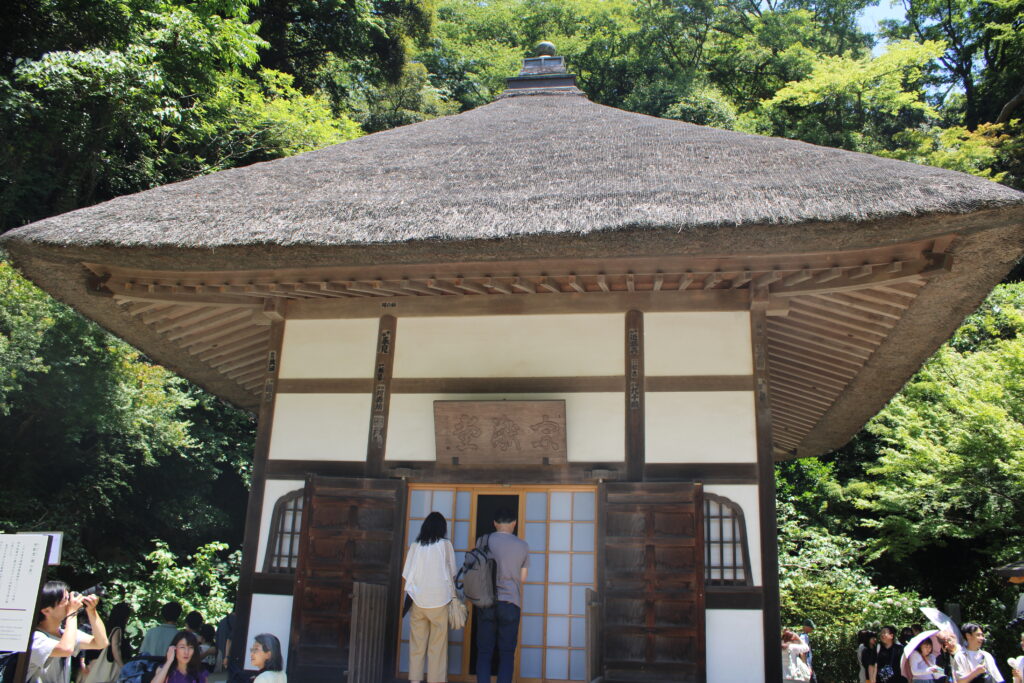
Tsurube no I
Nearby, there is a well known as Tsurube no I. This is actually one of the Ten Wells of Kamakura. The name “ Tsurube no I ” refers to the well’s bowl-like, bulging shape that resembles a water jar. The Kamakura Ten Wells were famous for their high-quality water in an area where water quality was generally poor during the Edo period.
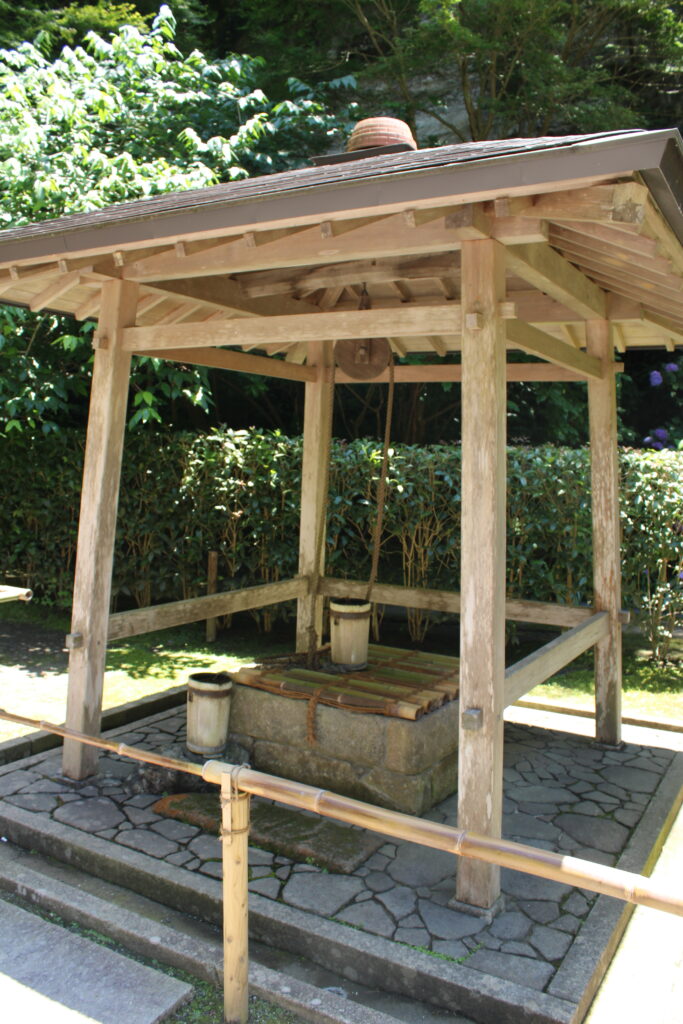
Conclusion
How did you feel about this article?
The hydrangeas were beautiful, weren’t they? This temple not only offers a stunning floral display but also a rich historical experience. It’s a great place to visit, especially during the autumn foliage season.
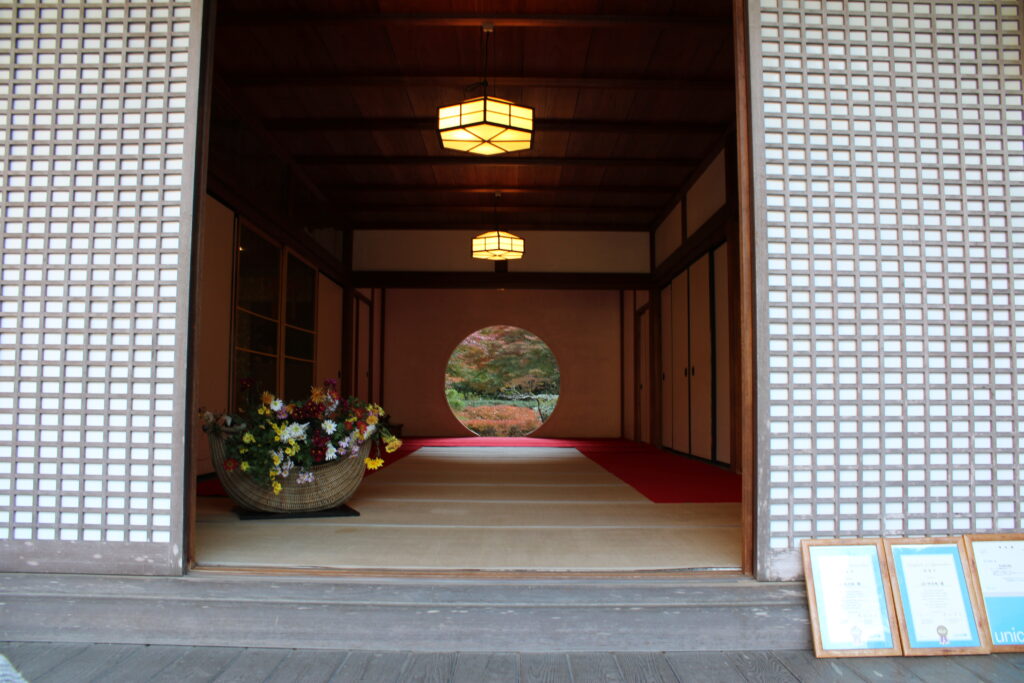
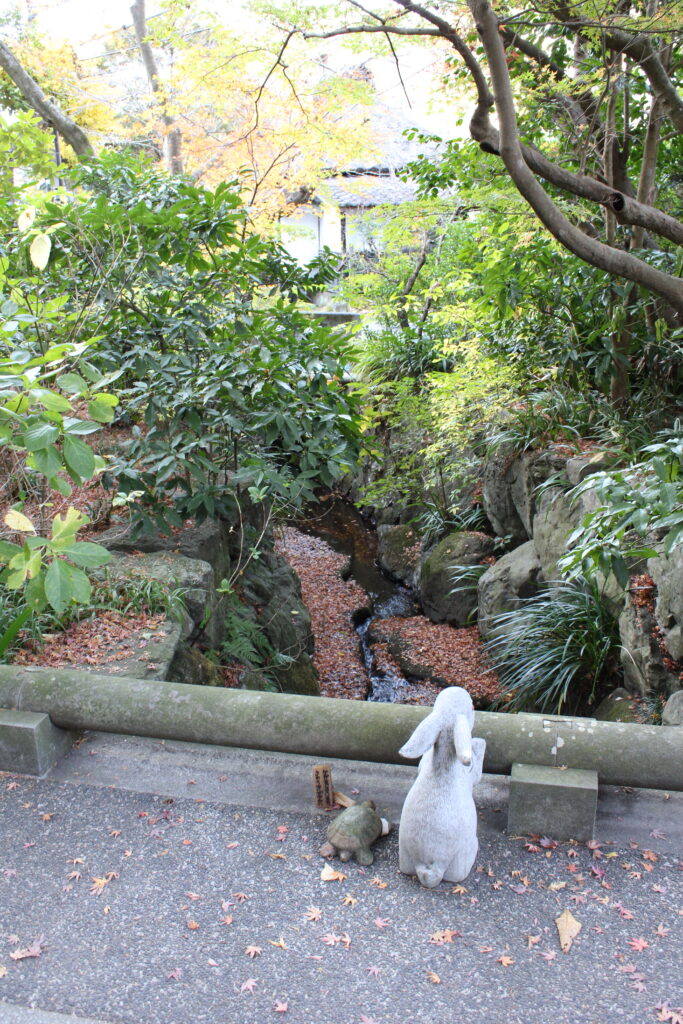
If you’re here to see the hydrangeas, consider visiting nearby temples like Engakuji and Jochiji to make the most of your trip!
02 Engakuji Temple | くま吉の歴史散歩ブログ (ashigarukumakichi.com)
08 Jochiji Temple | くま吉の歴史散歩ブログ (ashigarukumakichi.com)
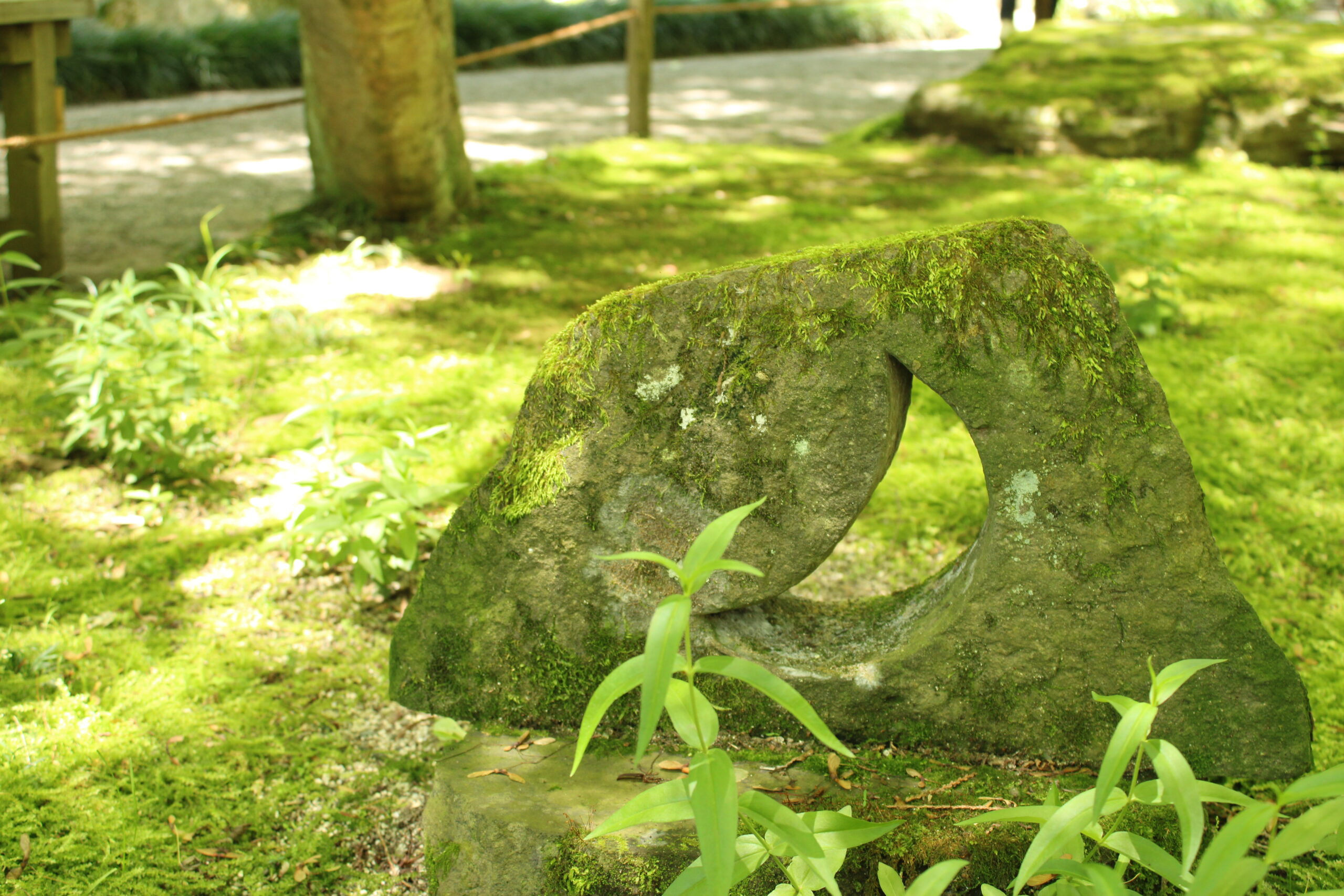


コメント